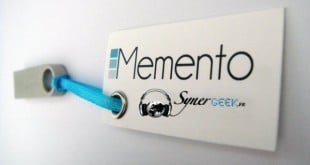Linux est bien pour deux choses :
presque tout marche du premier coup ;
si jamais ça ne marche pas du premier coup, ça marchera quand même (contrairement à d’autres systèmes).
Je vais vous expliquer l’installation d’un scanner non reconnu sous Linux (pour ma part, il s’agit d’un Agfa Snapscan E25) :
Trouver le firmware
Il vous manque un firmware pour que le système d’exploitation puisse communiquer avec l’appareil. Ce firmware se récupère directement dans le Driver Windows récupéré sur internet. Pour extraire les fichiers de l’exécutable Windows, utilisez la commande cabextract pour extraire tous les fichiers (les fichiers .bin sont des firmwares) :
debian:/home/mathieu/Desktop# cabextract 2.0.0.9-e25.exe
Extracting cabinet: 2.0.0.9-e25.exe
[…]
extracting Drivers/SCSI/T358.MPD
extracting Drivers/snap1212p.bin
extracting Drivers/snap1212u.bin
extracting Drivers/Snape10.bin
extracting Drivers/snape20.bin
extracting Drivers/Snape22.bin
extracting Drivers/Snape25.bin
extracting Drivers/snape26.bin
extracting Drivers/Snape40.bin
extracting Drivers/Snape42.bin
extracting Drivers/Snape50.bin
extracting Drivers/Snape52.bin
extracting Drivers/SnapScan 1212P_2.bin
extracting Drivers/SnapScan 1212U_2.bin
extracting Drivers/STI/agamisti.dll
extracting Drivers/STI/aggensti.dll
extracting Drivers/STI/agscssti.dll
extracting Drivers/STI/agsisti.dll
extracting Drivers/STI/agusbsti.dll
extracting Drivers/STI/message.exe
extracting Drivers/STI/message.ini
[…]
All done, no errors.
A vous de trouver le bon firmware pour votre scanner. Placez ce fichier dans un répertoire quelconque, du moment qu’il est en sûreté.
L’intégrer
Le répertoire /etc/sane.d contient un fichier de configuration par type (série) de scanner.
debian:/etc/sane.d# ls
abaton.conf coolscan3.conf genesys.conf ma1509.conf qcam.conf teco1.conf agfafocus.conf coolscan.conf geniusvp2.conf matsushita.conf ricoh.conf teco2.conf apple.conf dc210.conf gphoto2.conf microtek2.conf rts8891.conf teco3.conf artec.conf dc240.conf gt68xx.conf microtek.conf s9036.conf test.conf artec_eplus48u.conf dc25.conf hp3900.conf mustek.conf saned.conf u12.conf avision.conf dell1600n_net.conf hp4200.conf mustek_pp.conf sceptre.conf max1220u.conf bh.conf dll.conf hp5400.conf mustek_usb.conf sharp.conf umax.conf canon630u.conf dll.d hp.conf nec.conf sm3840.conf umax_pp.conf canon.conf dmc.conf hpsj5s.conf net.conf snapscan.conf v4l.conf canon_dr.conf epjitsu.conf hs2p.conf pie.conf sp15c.conf xerox_mfp.conf canon_pp.conf epson2.conf ibm.conf pixma.conf st400.conf cardscan.conf epson.conf leo.conf plustek.conf stv680.conf coolscan2.conf fujitsu.conf lexmark.conf lustek_pp.conf tamarack.conf
Repérez le fichier qui concerne votre scanner. Pour ma part, il s’agit du fichier snapscan.conf
Dans les premières lignes du fichier :
#—————————— General ———————————–
# Change to the fully qualified filename of your firmware file, if
# firmware upload is needed by the scanner
firmware /home/mathieu/Snape25.bin
Indiquez donc l’emplacement du firmware extrait précédemment.
Pour utiliser le scanner, le logiciel xsane fait très bien l’affaire.
 SynerGeek.fr Informatique & Veille Technologique
SynerGeek.fr Informatique & Veille Technologique

Heu… on peut pas dire que ce soit d’une simplicité enfantine non plus !! 😉